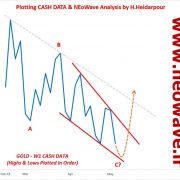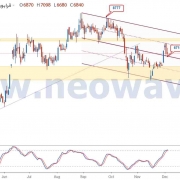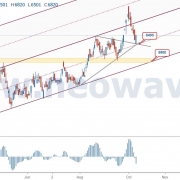(119) New Tips & Hints
Sometimes you say to go 1/2 Long or Short and sometimes you say risk 1% of capital on a trade. What does this mean?
ANSWER:
I’ve been privately asked this question so many times that a public response is now warranted. The most important element of long-term, successful trading is controlling losses. If you do not diligently control (and then reduce) risk on a regular basis, you are bound to experience an “account destroying” event at some point.
The confusion on this issue stems from the differences between futures and equities markets. If you trade equities, the amount of money required to buy stock is directly related to the current price times the number of shares. If you buy 100 shares when the price is $10, you will spend $1000 to own those shares. On the other hand, the amount of money you stand to lose will not be $1000 unless you decide to never employ a stop and the shares drop to $0. In futures markets, instead of owning shares you “control” contracts. You place money in an account that is used as a “good faith” deposit to settle any losses taken. To control $100,000 of a particular commodity may only require a $5,000 to $10,000 deposit. When you take a position, money is not removed from your account, but it is “locked up” and cannot be used for other trades until the position is closed out. Once a position is closed out, the loss (if any) is deducted from your account (in essence, you “pay” for the position only when you exit with a loss). If a profit was realized, then that profit is simply deposited into your account and no “purchase” (or outgo of funds) ever took place.
This difference between the way futures and equity positions are taken and paid for typically creates confusion for my clients. When I talk about risk, I’m not talking about how much it costs to own or control a position, I’m referring to how much money will be lost (as a percentage of total capital) upon exiting the position. So, if you have $10,000 of total trading capital, and you purchase 100 shares of a stock that costs $10, your outlay is $1000. The potential loss on that trade (what I refer to as risk in my updates) is dependent upon where you place your stop. If you place a stop at $9, your loss could be $100. That $100 is 1% of $10,000, so the loss on that trade would be 1% if your $9 stop is hit. If you place your stop at $8, the loss would be twice as large, or 2% of trading capital. If you use no stop (a tactic many unfortunately employ) and the stock drops to $0, then the loss would be 10% of total trading capital.
On the other hand, if you have a $10,000 futures account and take a position in Gold, the amount of Gold you control is 100oz (basis the Comex contract). At its current price of $888/ounce, that means the contract is worth $88,800. To control that one contract only requires a “good faith” deposit of about $5,000. That $5,000 (half of your $10,000) is not the amount you will have at risk – the risk could be much larger, especially if you do not use a stop. Your risk (i.e., potential loss) will be determined by the distance between your entry price (say $888) and your stop (say $880). If your stop is hit in the above example, you would lose $800, or 8% of your total $10,000 risk capital.
So, the capital at risk in a trade is NOT the money required to own or control a position, but the money that will be lost once the trade is closed out. Long-term successful trading requires you focus on the percentage of capital you will lose upon exiting a position, not the dollars required to take the position. As a rule, I recommend keeping losses (risk) to 1% of capital per trade. This allows you to be wrong about a market 10 times in a row and still have enough capital to recover once a real trend begins. If you risk 2%, you can only be wrong about 5 times before recovery of lost capital becomes increasingly more difficult. If you risk 5% of capital per trade (which is not uncommon for beginning traders), you can be wrong just 2 times before the loss becomes a strain and the emotions begin to run high, causing irrational trading behavior.











دیدگاه خود را ثبت کنید
تمایل دارید در گفتگوها شرکت کنید؟در گفتگو ها شرکت کنید.